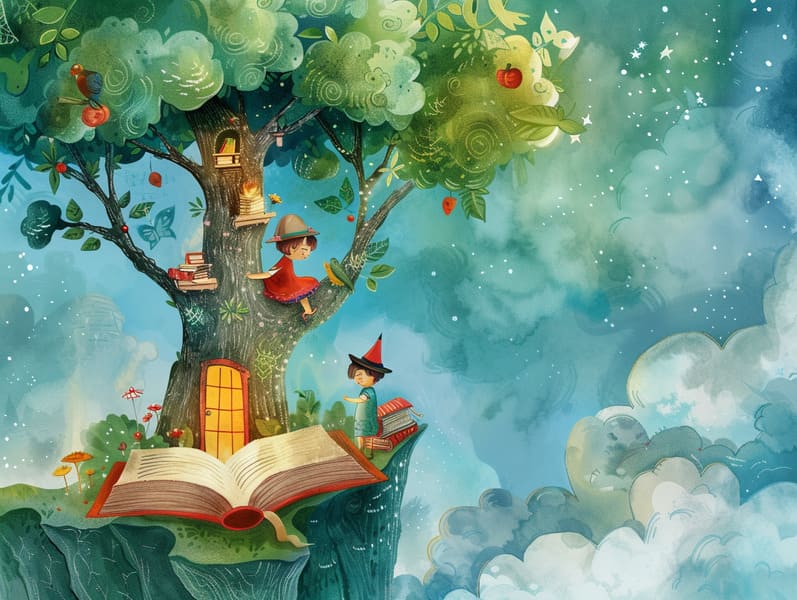The Dawn of Popular Fairy Tales and the Enduring Attraction.
The Dawn of Popular Fairy Tales and the Enduring Attraction.
Blog Article

Classic fairy tales have historical significance. These stories have been spoken from one generation to the next well before they were ever put on paper. They were born from a variety of backgrounds, including Asian traditions. They were initially passed along among elders, often carrying themes and messages concerning the societal norms and beliefs of the time.
The Brothers Grimm, Jacob and Wilhelm (the Grimm brothers), were among the first to collect and release many of these beloved tales. Their collection, "Grimm's Fables," included stories like "The Little Glass Slipper," "Little Brother and Little Sister," and "The True Story of Snow White," which have since become hallmarks in the world of classic fairy tales. Similarly, Hans Christian Andersen's whimsical fairy tales, such as "The Mermaid's Tale," and "The Little Duckling," have gained the love worldwide, cementing their place in the pantheon of classic fairy tales.
Despite being ancient, traditional fairy tales remain as applicable as ever, especially as bedtime stories for kids. These whimsical stories are now available in various formats, including richly illustrated books, magical animations, and online fairy tales.
Their lasting appeal can be traced to several delightful features:
Valuable Lessons: Old fairy tales often convey important moral lessons. Tales like "The Boy Who Cried Wolf" teach the importance of honesty, while "The Tortoise and the Hare" emphasize the qualities of perseverance and unpretentiousness. These stories offer children clear distinctions between correct and incorrect, helping to shape their moral compass in a soft yet lasting way.
Warmth and Understanding: Old fairy tales frequently include individuals facing trials and tribulations, motivating audiences to feel with their struggles and rally behind their triumphs. For instance, "Beauty and Her Beast" illustrates the necessity of seeing beyond looks to realize the inner being of a being, encouraging awareness and awareness.
Cultural Knowledge: Many fairy tales are saturated in the cultural contexts from which they emerged. Understanding these stories can provide captivating looks into different traditions, promoting a sense of global insight and perception.
Fantasy and Innovation: The supernatural elements in old fairy tales—magic wands—fuel children’s imaginative ideas. These stories guide readers to imaginary realms, awakening innovative ideas and a sense of amazement that remains a lifetime.
Classic fairy tales are not only charming but also edifying. They function as magical tools in promoting various thinking and feeling skills in kids. When old fairy tales are voiced, they cultivate verbal development by bringing new lexicon and detailed sentence structures. This practice also strengthens hearing abilities and concentration, as kids follow the story, eager to see what happens next.
Furthermore, deliberating the themes and characters of fairy tales can nurture thought processes and critical thinking. Little ones are educated to recognize patterns, guess what will happen, and realize cause and effect. These explorations also boost the young communicate their thoughts and feelings, promoting their emotional intelligence.
In today’s digital era, the accessibility of free fairy tales online has website made these tales more obtainable than ever. Internet resources and apps extend wide arrays of ancient fairy tales that can be viewed or played anytime, anywhere. Fairy tales spoken are particularly liked, presenting an enjoyable way for the young to relish these mesmerizing stories. Sound books and read-out-loud videos carry characters and settings to life, often paired with spellbinding melodies and harmonies that improve the tale-telling adventure.
The persistent attraction of old fairy tales lies in their ability to shift to the present while keeping hold of their key morals. Contemporary reimaginings of these fairy tales often feature more representative protagonists and modern settings, making them meaningful to today’s audience. However, the fundamental themes of boldness, kindness, and equity remain unchanged, continuing to reach audiences of all ages.
Traditional fairy tales also offer a sense of ease and knowability. They introduce a systematic narrative with a obvious beginning, middle, and end, often coming to a close with the conclusion of conflicts and the triumph of virtue over vice. This reliability can be encouraging for young ones, bringing a sense of steadfastness in an fluctuating world.
Ancient fairy tales continue to bewitch and coach new generations, maintaining their attraction and meaningfulness in modern society. As children's night stories, they distribute a perfect blend of delight and instruction, developing moral values, empathy, and creativity. The existence of internet fairy tales and the widespread nature of fairy tales told out loud make sure that these old stories remain acquirable to new generations.
By continuing and broadcasting these tales, we continue to venerate the rich tapestry of inventiveness and cultural heritage. Whether you are reading a vividly illustrated book, exploring a online collection, or listening via an audio story, the attraction of popular fairy tales is always within reach. These tales remind us of the unchanging influence of narratives and its ability to join us across generations and cultures.
Regardless if you are discovering a vibrantly illustrated book, perusing a digital library, or listening to an audio story, the splendor of classic fairy tales is always within reach.
These stories remind us of the unfading magic of stories and its ability to tie us across generations and cultures, making a tie that enchants and educates alike.